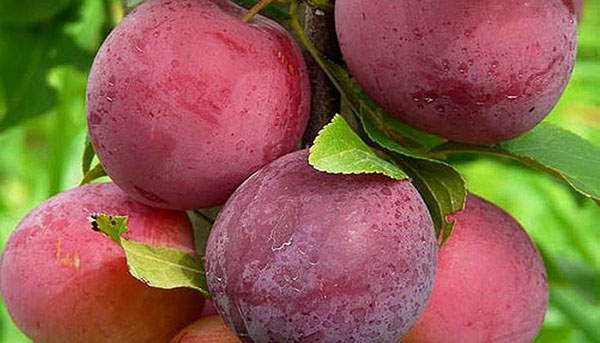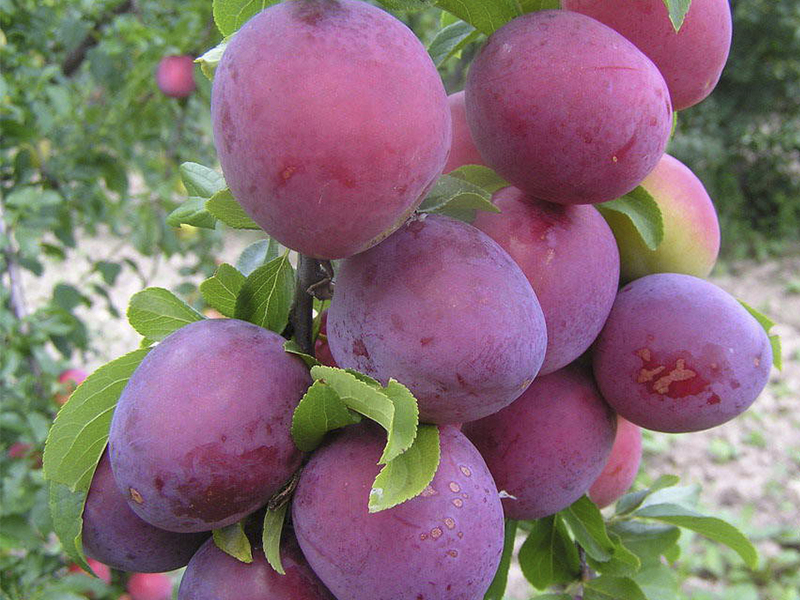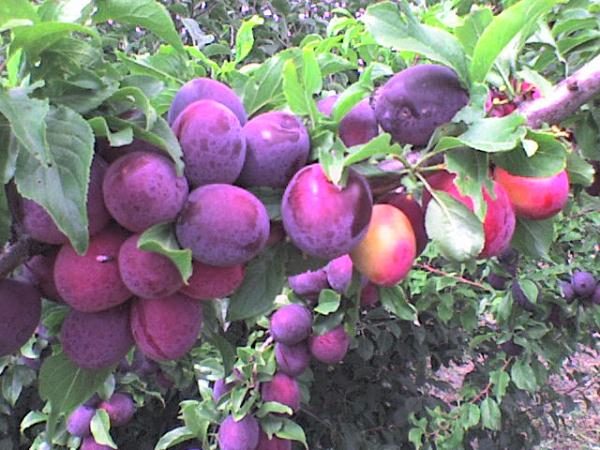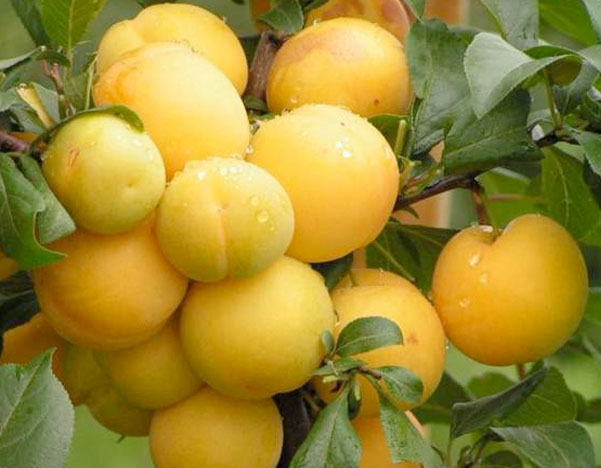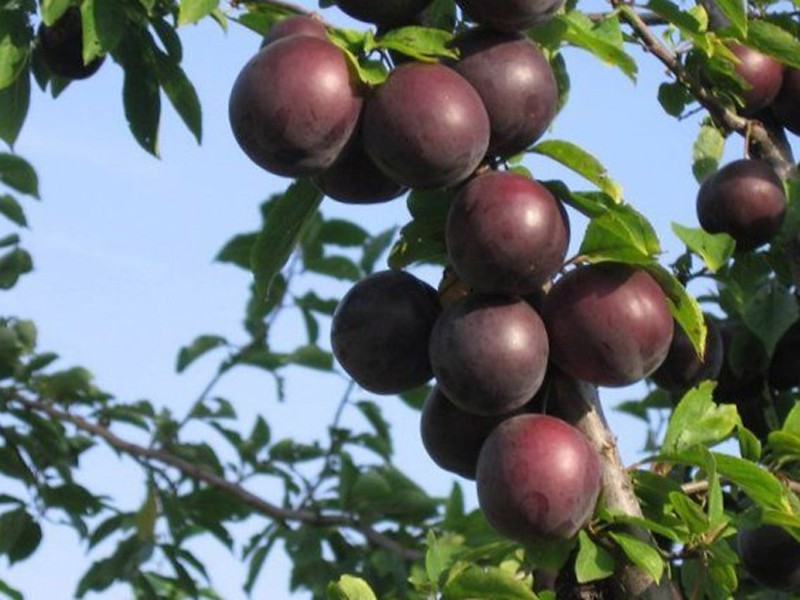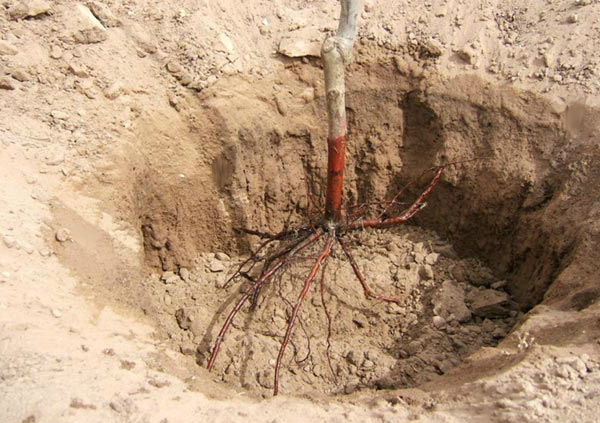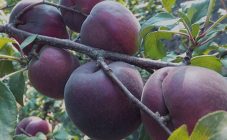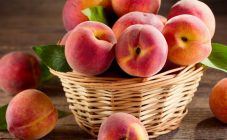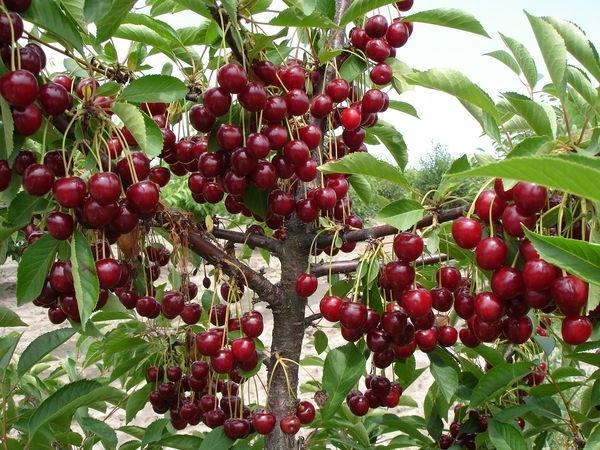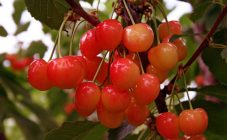Content:
Even in the last century, cherry plum was considered a wild tree, occasionally used as a decoration or rootstock for other fruit plants. Only starting from the second half of the 20th century, the cultivation of cherry plum began on an industrial scale. Thanks to breeders, many varieties have appeared, differing from each other in parameters, taste characteristics and ripening times. The best varieties of cherry plum will be discussed below.
Modern breeding has achieved stunning success in obtaining various varieties of cherry plum, each year improving their characteristics more and more.
The best large-fruited varieties of cherry plum
Cherry plum Found
It is distinguished by the ability to bear fruit already for 3 years of existence, mid-season, yield - up to 40 kg, withstands temperature drops well. Fruits are large, concentrated yellow in color, sweet and sour taste, weight reaches 35-37 grams. In addition to glorious fruits, it is notable for its early ripening period and good taste characteristics. Has low drought resistance, self-fertile.
Cherry Gek
High-yielding, mid-season variety, stands out for its colossal winter hardiness. Fruits, weighing no more than 35 grams, with a dark yellow pulp and a sour-sweet taste. The tree is of mediocre height, does not exceed 4 meters. This variety was obtained by mixing a Chinese early-fruited plum with an excellent cherry plum.
Abundant cherry plum
The record holder for fruit size, yield, transportability and keeping quality. Fruits are dark purple in color, about the size of a tennis ball, with an amazing dessert taste. Abundant was obtained by crossing the Tavricheskaya cherry plum and the Chinese plum Burbank.
The following large-fruited varieties are also worth noting: Peach, Duduka, Lodva, General, Cherry Globus, Violet Delight, Cherry Soneika.
The best frost-resistant varieties of cherry plum
Alycha Gift to Saint Petersburg
A medium-sized tree with a spacious, thickened crown reproduces a stable harvest every year. Fruits are undersized, up to 20 grams each, tasty, perfectly tolerate transportation over long distances. It is distinguished by its high resistance to cold climates, frosts and an abundance of precipitation.
Alycha Vladimirskaya comet
Self-fertile, frost-resistant variety, characterized by fruit size and high yield. The tree is medium-sized, with a thin, rounded-oval crown. Fruits are oval, ovoid, burgundy in color, with a dense waxy coating. The pulp is juicy, dense, orange, sweet and sour taste, pleasant, freely separates from the stone. Differs in self-fertility, high winter hardiness and disease resistance.
Cherry plum Ivolga
Frost-resistant and drought-resistant variety, interesting for the sweet and sour taste of fruits with a bright aroma. The fruits are small, tasty, with juicy and aromatic pulp.
The best self-fertile varieties of cherry plum
Cherry Traveler
According to the description, the Traveler cherry plum has high frost resistance, drought resistance and yield. Has a unique banana flavor, which is harmoniously combined with gentle sourness. The fruits are large, yellowish, the stone cannot be separated. The tree is medium in size and starts bearing fruit early.
Mara
Cherry plum Mara, according to the description of the variety, is a fast-growing, strong tree with a rounded crown. The leaves are small, serrated at the edges, the fruits are bright yellow, very tasty. The plant is perfect for growing in central Russia, it tolerates frost well and has strong immunity from diseases.
The best varieties for the Moscow region and the Leningrad region
Cherry plum Coloniform
An unusual plant - both tall and compact - reaches a height of 3-3.5 meters, while the diameter of the entire crown is no more than 1.5 meters. Winter-hardy, high-yielding variety, large fruits, rich scarlet color, skin with a slight waxy bloom. The pulp is tasty, moderately juicy, dense and fibrous.
Vitba cherry plum
Cherry plum early ripening, self-fertile, high-yielding. The tree is medium-sized, with a rounded, spreading crown, average foliage. The pulp is friable, orange in color, very tender and juicy, tasty and sweet. The stone is small in size, easily separated from the pulp.
Purple dessert
Received as a result of crossing the Chinese plum and cherry plum Lyusha dense meat, entered in the varietal Register of Russia in 1971. Differs in large fruits and bright burgundy, purple color. High yielding and excellent disease resistance.
Cherry plum Steppe yellow
A high-yielding, winter-hardy variety, was obtained in the mountainous zone of Altai at the N.I. M.A.Lisavenko. The tree with a rounded crown grows up to 3.5 meters, the leaves are green, the shoots are pubescent. Fruits are small, yellow (18 grams), sweet and sour taste. It is successfully grown in the Novosibirsk region.
High yielding
Cherry plum Tsarskaya is a fast-growing, high-yielding variety, the owner of excellent taste characteristics, high resistance to diseases and a beautiful appearance. Significant disadvantages are self-fertility and low resistance to cold.
Agrotechnics
Cherry plum is not picky about the choice of soil. It takes root well on sand, clay, in arid regions and on land with a close location of groundwater. Caring for it is very simple, the seedlings easily adapt to the new planting site and quickly increase the yield.
Correct fit
It is recommended to plant seedlings of any variety in early spring, after the soil has completely thawed and warmed up. Depending on the region, the planting period falls in mid-April - early May. The hole for planting a seedling is adjusted to the size of the root system. The landing site in depth should be 25-30 cm (60-65 cm) larger than the root system, 70-75 cm wide.
A young seedling must be allocated a plot of 4 * 5 meters, since over time it will grow, and the crown will take up a lot of space. The optimal soil is fertile loamy soil.
When choosing a seedling, you need to pay attention to:
- the integrity of the root system, shoots;
- presence / absence of damage, parasites, fungi.
Planting in autumn does not guarantee the survival of the plant in winter.
The plot is chosen sunny, protected from open wind. Before introducing a young plant into the soil, the soil must be fed with organic and mineral fertilizers (manure, humus, superphosphate).
The placement of a young tree should be carried out with the most careful actions so as not to damage the root collar, which, when planting, should exceed the ground level by 7-9 cm.Immediately after planting is complete, the plant is watered, mulched and tied to a peg.
Care
Most varieties of cherry plum are self-fertile, therefore, in order to get a good harvest, a pollinator must be found in the garden. To do this, it is better to grow various varieties of cherry plum at the same time on the site. The Kuban coin boasts self-fertility.
Cherry plum enters fruiting much faster on poor soils, while in more fertile soils it intensively grows wood.
For the first three to four years, it is very important to regularly loosen the soil and remove weeds. In the future, the weeds will no longer be dangerous. Watering is carried out as it dries, depending on climatic conditions.
To prevent rodents from spoiling the tree bark in winter, you need to take care of it in the fall - you can wrap the cherry plum trunk with a plastic net (15-20 cm from the ground).
Trim, cut and shorten the branches annually. If this is not done, the branches thicken strongly, the fruits become smaller.
Top dressing
It is recommended to feed the plant annually with urea, phosphorus-potassium complexes, nitrogen-containing and organic fertilizers.
- In the springwhen the first flowers appear on the plant, it is necessary to add potassium and urea sulfate;
- In June - nitrogen fertilizers and urea;
- After harvest - superphosphate and potassium sulfate.
Disease prevention
Most varieties have strong immunity to diseases, but, nevertheless, preventive measures will not interfere.
Moniliosis becomes a frequent disease of cherry plum, which is difficult to cope with, it will require careful disposal of infected places (it is better to burn it).
The most dangerous pests are the moth and downy moth.
To protect the seedlings from diseases and pests, in the fall, the tree is sprayed with a solution of copper sulfate.
There are a lot of cherry plum varieties, and each of them is remarkable in its own way. The variety of species makes it possible to choose for your site exactly the one that is optimal for the climatic conditions and soil. Every gardener is able to grow an excellent harvest of delicious fruits, if you take proper care of the plant.
